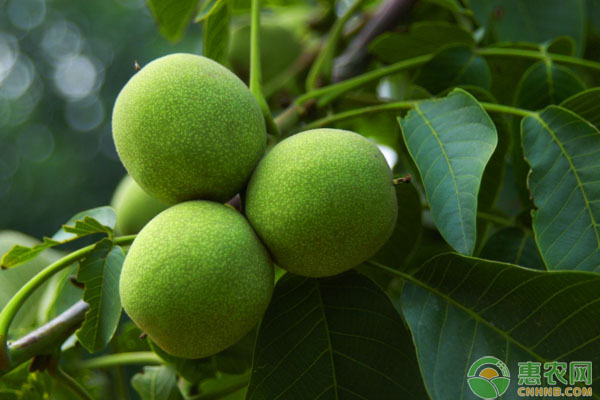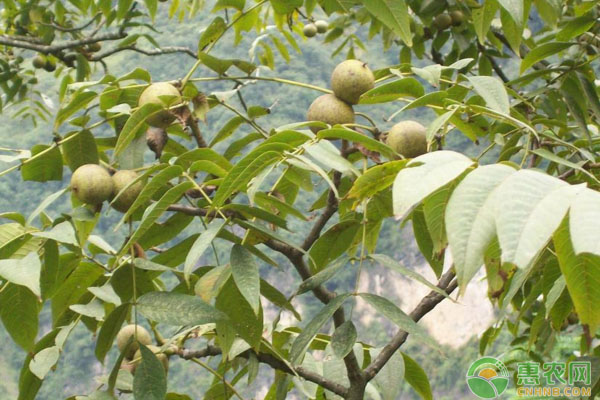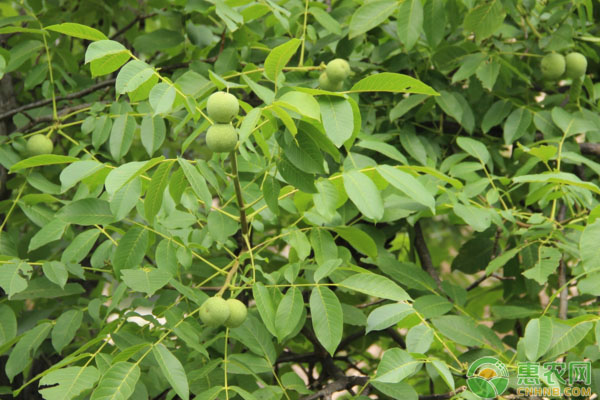Good growth conditions are required in the growth of walnut trees in Luonan. With the increase of the age of walnut trees, the walnut tree shape appears to be disordered, the relationship between the master and the slave is unclear, the result is moved outward, and the yield is less, resulting in walnut trees. Premature aging and shortened lifespan, so it is necessary to properly trim the walnut trees to adjust the light conditions and nutrient distribution.

1 Plastic trimming principle
The two basic principles of walnut tree pruning: only from the biological characteristics of the walnut, the age of the tree, the tree potential and the relationship between the various organs, the pruning needs to be guided according to the shape of the tree and the branches; only in strengthening the soil, fertilizer, On the basis of comprehensive management of water, species and pest control, the role of pruning can be fully realized.
2 trimming period
Luonan walnut can be pruned in spring, summer, autumn and winter, but in general, winter shear is better than autumn shear, autumn shear is better than spring shear, spring pruning is carried out after germination, and autumn pruning is carried out after fruit harvesting to before falling leaves. Summer shearing is carried out in the early stage of rapid growth of new shoots (mid-April) to mid-July.
3 sapling
The purpose of sapling shaping: cultivating a strong tree skeleton and rapidly expanding the crown to make early results and early yield;
The tree shape commonly used for sapling shaping: sparse layer shape and happy shape. When trimming, it should be adapted to the local conditions according to the specific conditions.

3.1 sparse form
3.1.1 Reasonable drying
The reasonable trunk height needs to be determined according to the characteristics of the variety, the site conditions and the intercropping requirements. The dry height is about 1.5m, and the height of the slope is about 1~1.2m. The walnut plantation, which requires double harvest of fruit, should not only be small in planting density, but also should be properly set higher.
3.1.2 Cultivation of Central Leadership
The upright branches of the trunk are generally cultivated as central leaders. In order to make it grow robust, it is necessary to maintain more auxiliary branches and control the competition branches, and at the same time control the growth of the main branches accordingly, so that the tree body develops in a balanced manner. However, in order to improve the conditions of the inner wind, when the main branch is selected enough, it should be lowered as soon as possible to control the height of the tree and make the crown become delayed.
3.1.3 Selection and cultivation of main branches
Select the main branch to pay attention to the location and angle, generally divided into 3 layers, the first layer has 3 main branches, 2 in the second layer, and 1 to 2 in the third layer. The horizontal angle between the main branches of the first layer should be kept at about 120cm, the distance should be 30~50cm, and the base angle (the angle with the central leading trunk) should be 50~60°. The distance between the main branches in the layer should be kept at about 30cm. The spacing between the layers should be 1.5~2m between the first and second layers, and about 1m for the second to third layers. In this way, the 1st main branch can be shifted to the south from the north, and it is easy for sunlight to enter the canopy from both sides of the east and west.
In order to make the main branches stronger than the side branches, the master and the slave are distinct, and the advantage behind them must be controlled as early as possible to prevent the formation of the main branch weak and the strong "backward pull" phenomenon. The specific method is: When it is born, it is thinned out and cultivated into a small branch group. If the main branch is weak, the angle of the back branch is higher and the direction is better, then the head can be changed and the original main branch can be cut off, but if the angle and direction of the back branch If they are not good, they should be used to change their heads. For those who are moderate or weak, they should be treated appropriately according to the surrounding space and the influence of the growth of the side branches, but it is not appropriate to keep too much.
3.1.4 Selection and cultivation of lateral branches
The lateral branches are important parts of the resulting branch group, and the branches that are obliquely inclined on both sides of the main branch should be selected. The number of side branches is generally 2 to 3 on each main branch of the first layer, and 1 to 2 on each of the main branches on the 2nd and 3rd layers, and the 1st side branch on each main branch should be left in the same direction, the second The lateral branches remain on the opposite side of the first lateral branch, the third lateral branch remains on the same side of the first lateral branch; the second lateral branch is about 1 m away from the first lateral branch; and the distance from the third lateral branch to the second lateral branch can be appropriately reduced. The horizontal angle between each side branch and the main branch should be kept at about 50°. If it is too large or too small, it will affect the tree potential and the result.
The cultivation of collaterals is mainly to correctly control the superiority of the main branches, to prevent the appearance of strong or weak upper and weaker, and to weaken the premature senescence of the posterior lateral branches. Therefore, it is timely and appropriate to take advantage of the prolonged growth of the main branches. The pruning measures of pressure-release-pressure-discharge alternately not only balance the growth of the main branches before and after, but also cultivate stronger lateral branches, and the main branches can be bent along a generally straight line, which is conducive to expanding the results. The range of stretches of the group, the well-established branches of the results.

3.2 happy shape
This type of tree can be used in areas where the soil is thin or where the open species and the central leadership are weak. Generally, three upper oblique main branches are arranged uniformly around the circumference, and two to three side branches are left on each main branch, and the cultivation method of the side branches and the main and side branches can be referred to the sparse layer shape.
3.3 Cultivation results
In the process of selecting the main and side branches, it is necessary to take the opportunity to select the branches in advance and arrange them in a reasonable manner, and rationally arrange and train various branches, especially the large and medium-sized result branches to prevent abnormal tree shape. Large and medium-sized result branches have the ability to prolong long-term results. These branches should be cultivated in the inner and lower part of the canopy, so that they can be interlaced and grow to occupy the main space. The method of culturing is generally performed by first pressing and then releasing, and the scaling is better. In the first year, the upper oblique branch with appropriate position and strong position is selected for heavier cutting to promote branching in the lower part. In the second year, the branch is strong and weak, and the left side is inclined to make the branches grow evenly and vigorously. Prevent excessive growth and undermine affiliation, and always pay attention to weakening and staying strong, and renew and rejuvenate.
4 Trimming essentials for trees of different ages
4.1 initial result tree
About 10 years after the start of the results. The main task of pruning is to control the top and back advantages, adjust the growth of the backbone branches at all levels, and cultivate the resulting branches. By timely processing the dense branches, overlapping branches, cross branches, and diseased branches, to prevent tree-shaped disorders and malformation. At the same time, properly short, retract or remove strong branches, and strictly control the back branches. For the result group, it is necessary to pay attention to the coordination and the strength of the interception, so that the distribution is reasonable. For the branches that do not need to be retained for a long time in the central leadership, they should be removed as soon as possible to avoid the removal of the central leadership after the growth.
4.2 Fruit Tree
The fruiting period is generally about 30 to 40 years. The pruning task is mainly to adjust the relationship between growth and results, control the canopy, improve the light in the tree, update the result branch group, overcome the phenomenon of large and small years, and prolong the fruit age. For auxiliary branches and drooping branches, it should be modified or used according to the size of the space. It is necessary to combine shrinkage and slow release, appropriately reduce the peripheral branches, and at the same time carry out reasonable soil, fertilizer and water management, and pick up the heart in summer to strengthen the weak branches. The retraction of the group was updated, and the measures to protect the flowers and flowers were strengthened in the next year to increase production.
4.3 aging tree
The aging tree pruning task is mainly to update the backbone branches and the result branches, to extend the life of the trees, and to increase the yield. Specific practices: It should be treated differently according to the situation of the tree. For the tree that is just beginning to age, it should be updated early, and the strong branch or the long branch with appropriate angle should be selected as the succession branch, and it should be reformed and cultivated; Extremely senescent trees can be sawn off from the middle and lower parts of the big branches, causing the germination to grow long branches and re-form the canopy, while the old tree renewal should be combined with strengthening soil, fertilizer, water management and cutting off the roots of aging.
Zhejiang Haisheng Medical Device Co., Ltd , https://www.hisernmedical.com